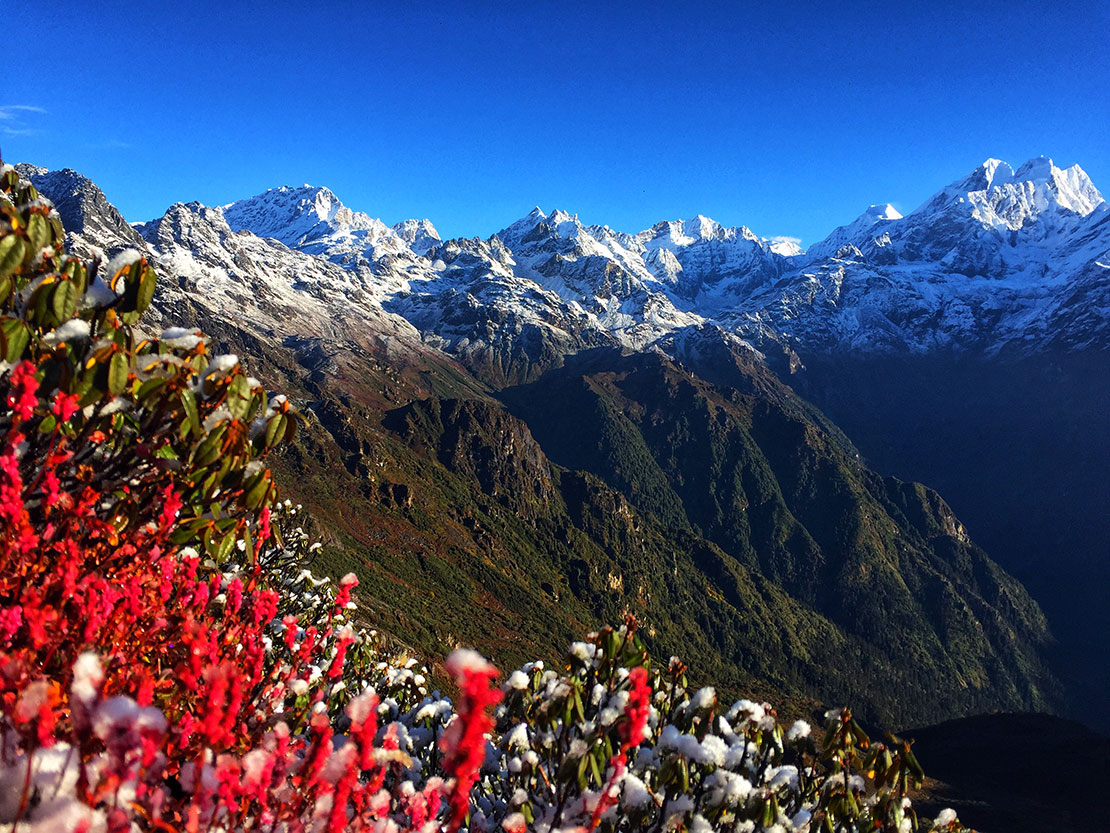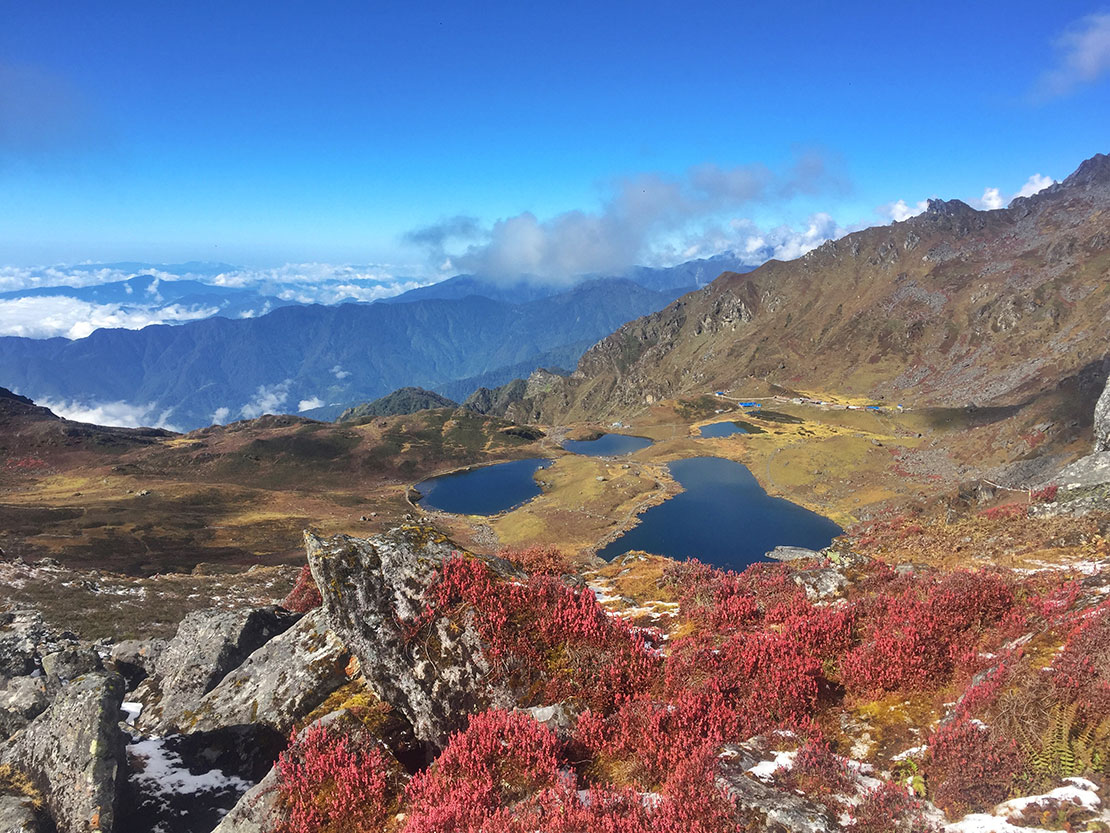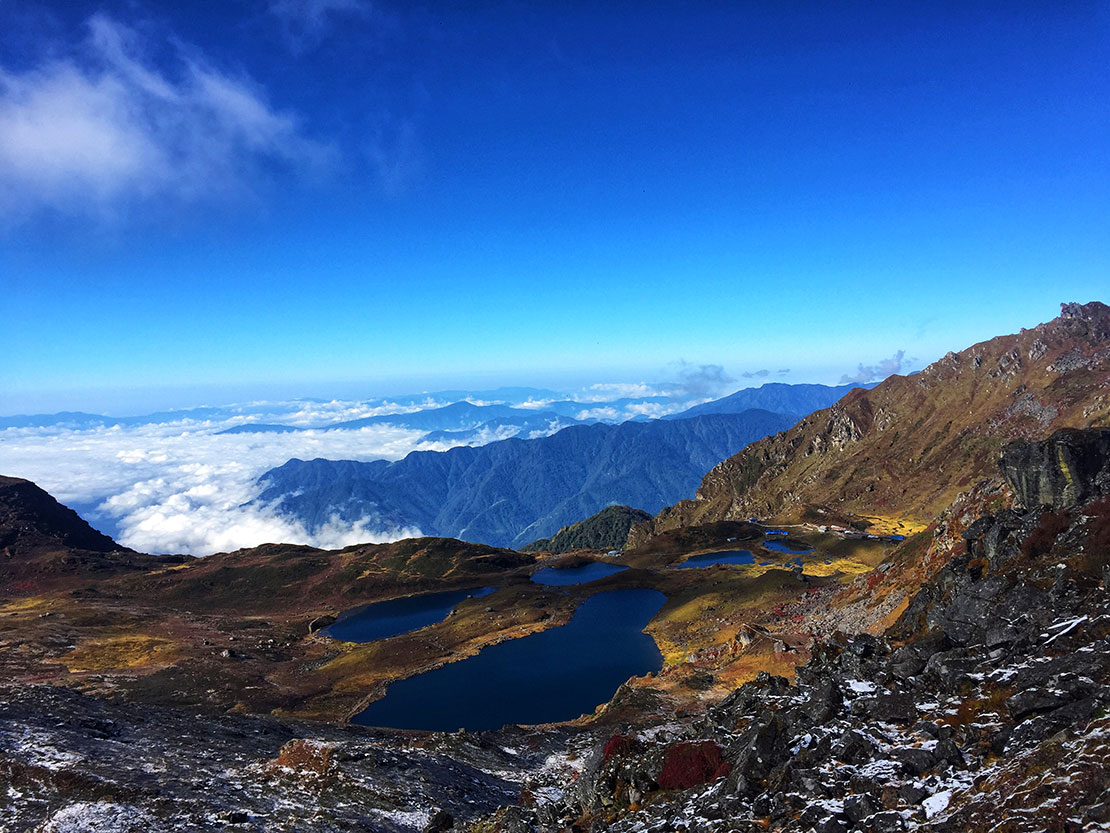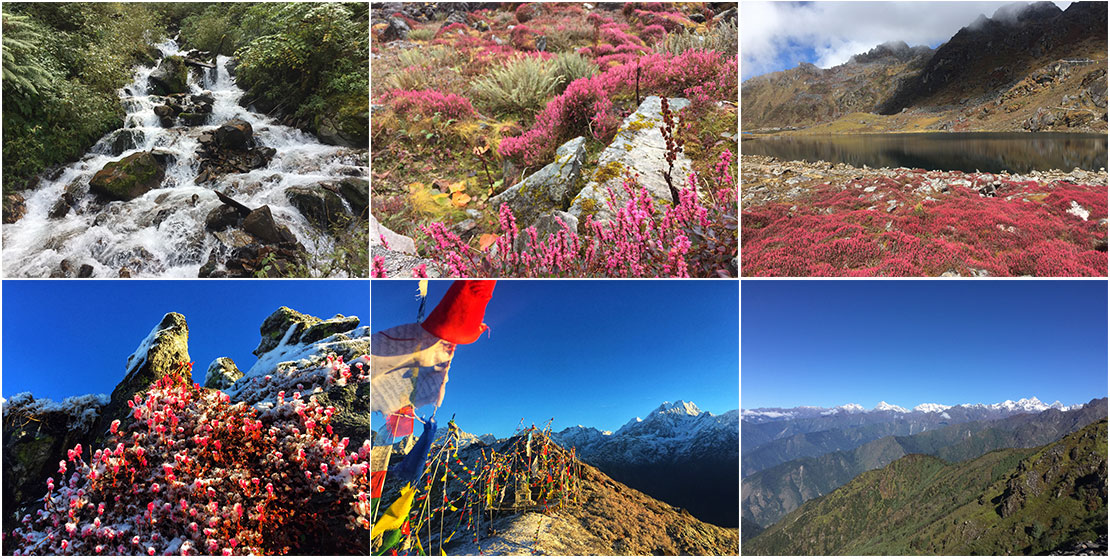“Helambu mathi Ama Yangri, Ama Yangri wari Bhotang Gaun, Bhotang mathi Panch Pokhari.” The first time I heard this catchy Tamang selo was at a hotel in Tarkhegyang of Helambu region along with three other travel partners. Our minds created an alluring vision of Panch Pokhari and Bhotang village right then and there. That was in October 2016 and we were on our way back to Kathmandu from a trek to Gosainkunda. It took us, the same group of people, four years to finally turn our yearnings into reality and visit Panch Pokhari via Bhotang.
On the first day, we took a local bus from Gokarna and reached Bhotang. There was time to walk up to the nearby villages of Chimdi or Deurali but the bus ride through Melamchi was so brutal that we had to rest. The overcrowded buses, which charged passengers double the regular fare, as well as poor road conditions should be matters of grave concerns to the related authorities.
The next day we hiked up to Noshyam Pati (3700m). We stopped for lunch at Brongdogang (Tuppi Danda, 2300m). There we met a very cheerful and young hotelier, Chirring Sherpa. He served us rice with daal and cabbage potato curry, all from his vegetable garden right behind the hotel. We ate the food heartily while eyeing the mushroom being sun dried on the roof.
We talked for a while and he asked us if we are related to Melina Rai since we all shared the same family name. Later, we found out that he was into singing and had even released a Tamang selo ‘Panch Pokhari Mela’. You can find this song on YouTube where Chirring, at sweet sixteen, falls in love with a girl at the Panch Pokhari Mela. We finally bade farewell to him and then walked through forests, waterfalls and across several streams to reach Noshyam Pati.
On the third day, we were accompanied by a dog named Tiger. We didn’t know where he came from but we suspected he must be the lodge owners’ pet. So we tried to shoo him away multiple times but it seemed as if he wanted to guide us till our destination. Tiger walked faster than us and waited patiently as we trudged uphill. So, we let him be as we were also too tired to expend our energy that much at that high an elevation.
Prepossessing Panch Pokhari

About two hours later, we found ourselves in a meadow full of dark pink wildflowers. At that moment, even though tired to my limbs, all I could think was Hans Christian Andersen was right in saying, “Just living is not enough. One must have sunshine, freedom, and a little flower.” We had lots of little flowers. There was a colossal burst of the dark pink wildflowers spread far and wide and some other flowers that had managed to survive the cold scattered here and there among the pink stretch.
We reached Panch Pokhari at around 11 in the morning. We could not believe our eyes when we saw one of the lakes, emerald in color with yellow turf around it. The sky was cloudy yet the view was stunning. The weather was getting foggy, windy and rainy but we forgot everything and started clicking photos. The rain got stronger so we rushed to the hotel and a few moments later, it started raining heavily with ice pellets. We stayed indoors drinking hot water and warming up around the fire hearth. We slept early to the sound of rain on the roof and the wind blowing strongly as we had to wake up early the next day.
The next day, early in the morning, we started our hike and reached the top of Panch Pokhari (4300m) by six in the morning to view the sunrise. It had snowed as well the previous night so we walked along the snowy trail. As the sun rose, Panch Pokhari turned bluer and became all the more beautiful. Dorjee Lhakpa Himal range to the northwest and Jugal Himal to the northeast added magnificence to the view.
When we were headed downhill from the viewpoint to Panch Pokhari and then back to the hotel, the snow had already melted in the lower regions. We again found ourselves in the green field with patches of yellow turf and dark pink wildflowers. We sunbathed facing the biggest of the five lakes and contemplated on the grandeur of nature. We felt blessed to have witnessed several seasons in a matter of just a few hours. With content hearts, we went back to the hotel and filled our stomach, rested for a while and then walked back down to Noshyam Pati.
We didn’t want to return to Kathmandu through the same route. We had been inquiring about the Chautara trail. We met trekkers who came from the Chautara route, had lost their way but still made it to Panch Pokhari. So we talked to the lodge owner at Noshyam Pati and asked him if he could guide us till Hiley, the point where most trekkers get lost, or find someone to guide us.
To our pleasant surprise, Chirring from Brongdogang was there to guide us halfway. Of all the days, the second last day was a strenuous walk. Apart from the first hour of walking uphill, the path was mostly steep downhill. For anyone planning to take a route till Panch Pokhari via Chautara, one must carry camping materials and enough water. If you are lucky, you many find a shed to stay at but most of them were deserted when we passed that way. However, we did find ourselves a yak shed where we had creamy yak milk tea at the end of the day.
We then walked until it was dark and we lost our way in the jungle. We were supposed to reach Lami Danda but then ended up at Gobre, a two-hour walk away from Lami Danda, after panicking at seeing leeches while lost in the forest and frantically looking for the trail.
The next day, we walked till Chautara in Sindhupalchowk. It was a four and half hour walk from Gobre. As our data network regained its strength, we came to know of two accidents in Sindhupalchowk due to overcrowding. The bus we were in was also crammed with passengers but we had no other options. Luckily, all of us got back home, safe and sound, ready to get back to the hustle and bustle of city life.






































